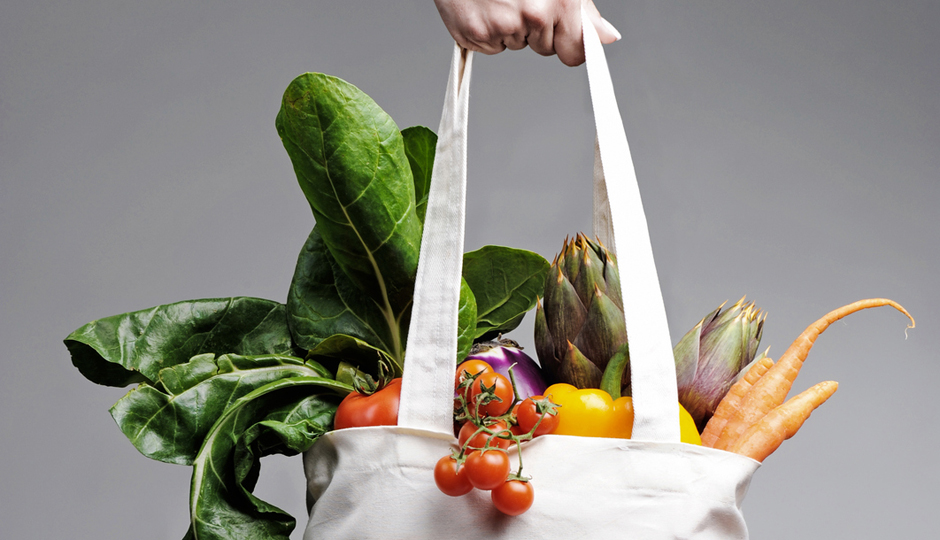How Your Brain Tricks You Into Spending More Than You Need to When Trying to Eat Healthy
The only thing worse than waiting in an hours-long line for brunch, only to be served a plate of eggs topped with a meal-ruining orange slice (tell me: WHO wants citrus on their eggs?!) is going to the grocery store and leaving with a cardiac episode-causing balance in your bank account because you just had to buy the fancy quinoa and the fancy organic honey and the fancy sourdough bread. And by fancy, I mean expensive.
Hey, it happens to the best of us. And as the Washington Post reports, you may be able to blame your preference for budget-breaking items at Whole Foods on a brain glitch. It seems, according to a new study to be published in the Journal of Consumer Research, we pretty much always — often wrongly — assume that the more expensive an item is, the healthier it is. And of course, if you’re going to eat quinoa salad for lunch EVERY damn day, you want it to be the healthiest quinoa, right? Right. So you reach for the most expensive bag.
As co-author of the study Kelly Haws told the Post, our brains are busy and they often use shortcuts to make decisions. In this case, the shortcut is your brain deciding that healthy equals expensive. To look into this, the researchers ran a slew of experiments on college undergrads. For one experiement, they asked the participants to choose the more healthy of two sandwiches; the students always chose the more expensive option, even when the researchers switched the prices. In another experiment, participants rated the vitamin DHA as more crucial to a healthy diet when it was marketed as an ingredient in a pricey trail mix versus an average-priced trail mix. The study authors ran three more experiments, all looking at how we decide what the “healthy” option looks like in relation to price. In the end, the researchers concluded that consumers overwhelmingly believe that healthy means more expensive. And this is why, when perusing the aisles at the grocery store, you may find yourself reaching for the mayonnaise that rings in at $10.99. (I have done this. I am not proud.)
As Haws told the Post, this automatic assumption is a problem for a number of reasons, one of which is that folks trying to be health-conscious could easily be overspending at the grocery store. As someone who stands in the oils aisle wondering WTF the difference is, health-wise, between the $7 coconut oil and the $17 coconut oil, I would agree. This assumption can also skew our perception of what ingredients are healthy.
And the tough thing is, we make these assumptions without actually thinking about them (your brain’s just trying to make your life easier, you know?), so it’s hard to rewire your brain to think differently. But there are ways to help yourself — and your bank account — out, like by writing a grocery list before hitting the store. That way, when you see “organic black beans” on your list, you can remind yourself that the beans will still be organic black beans — same health benefits and all — whether they’re $1 or $3. Then hopefully, your brain will snap out of autopilot and you’ll reach for the $1 can.
Here’s to lower grocery-shopping bills this year!
Like what you’re reading? Stay in touch with Be Well Philly—here’s how:
- Like Be Well Philly on Facebook
- Follow Be Well Philly on Twitter
- Follow Be Well Philly on Instagram
- Follow Be Well Philly on Pinterest
- Get the Be Well Philly Newsletter



